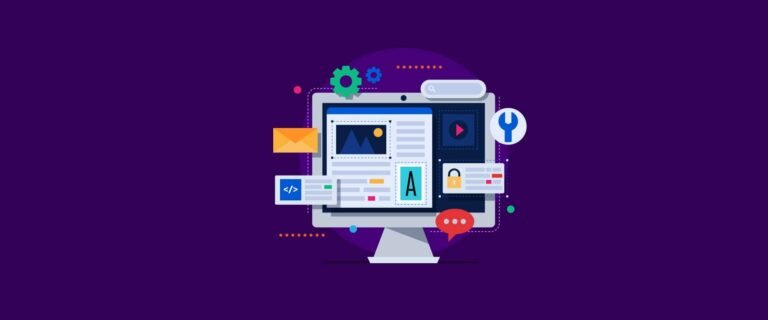15 ways an LMS can improve your L&D
In an increasingly digital world, a Learning Management System (LMS) is an essential tool for managing and tracking employee learning. Not only does it provide a way to store and organise learning content, but an LMS can also be used to track employee progress, administer quizzes and assessments, and even deliver content.
What is an LMS?
A Learning Management System is a software application or web-based technology used to plan, implement, and assess a learning process. Typically, an LMS provides an instructor with a way to create and deliver content, track student progress, and manage coursework. An LMS may also provide learners with a way to access learning content, submit assignments, and take quizzes.
Most LMSs are cloud-based. This means that the software is hosted by the vendor and accessed by users through a web browser. There is no need to download or install any software on your computer. You simply need an internet connection and a web browser to access your Learning Management System.
To know more about the Learning Management Systems, its history and evolution, Click Here.
How can an LMS improve learning and development?
There are many benefits of using an LMS for learning and development, but here are 15 ways that an LMS can help improve your employee training program:
Always Online:
An LMS keeps your learning content accessible 24/7, so employees can access it whenever they need it. There’s no need to wait for a scheduled training session or worry about losing access to content once a course is complete. Additionally, a Learning Management System can be used to deliver just-in-time training, so employees can get the information they need when they need it.
Super Convenient:
An LMS makes learning convenient by allowing employees to complete courses and training modules at their own pace and on their own time. This is especially beneficial for employees who have busy schedules or who work different shifts. Additionally, a Learning Management System can be accessed from any location with an internet connection, so employees can learn anytime, anywhere.
Improved Engagement:
An LMS can help improve employee engagement by offering interactive content, such as videos, games, and quizzes. This type of content is more engaging than traditional eLearning courses and can help hold employees’ attention. Additionally, an LMS can provide social learning features, such as forums and discussion boards, which can encourage collaboration and interaction between employees.
Better Retention:
Because an LMS can deliver content in small, manageable chunks, employees are more likely to retain the information. Additionally, a Learning Management System can offer spaced repetition, which is a learning technique that helps embed information in long-term memory.
Increased Accountability:
An LMS can help increase accountability by providing a way to track employee progress and completion rates. This information can be used to identify areas where employees need more training or where the training program needs to be improved. Additionally, an LMS can provide managers with insight into which employees are struggling and which employees are excelling.
Improved Collaboration:
An LMS can improve collaboration by providing a central location for all learning content. This makes it easy for employees to find and share resources. Additionally, an LMS can offer social learning features, such as forums and discussion boards, which can encourage collaboration and interaction between employees.
Assessment and Testing:
An LMS can be used to administer quizzes, exams, and other assessments. This allows you to test employees’ knowledge and identify areas where they need more training. Additionally, an LMS can be used to create and deliver custom assessments, such as scenario-based questions or performance tasks.
Compatibility with Multiple Devices:
An LMS is compatible with multiple devices, including computers, laptops, tablets, and smartphones. This allows employees to learn on the go and access content from any location. Additionally, an LMS can be used to deliver content in different formats, such as video, audio, and text.
Flexible Delivery Methods:
An LMS offers flexible delivery methods, so you can choose the best way to deliver content to your employees. For example, you can deliver content as a self-paced eLearning course, live webinar, or in-person training session. Additionally, a Learning Management System can be used to deliver content in different formats, such as video, audio, and text.
Improved Employee Performance:
An LMS can help improve employee performance by providing a way to track employee progress and completion rates. This information can be used to identify areas where employees need more training or where the training program needs to be improved. Additionally, a Learning Management System can provide managers with insight into which employees are struggling and which employees are excelling.
Reduced Training Costs:
An LMS can help reduce training costs by eliminating the need for expensive instructor-led training. By creating online courses, you can deliver training to employees at a fraction of the cost. Additionally, a Learning Management System can be used to create and deliver custom assessments, such as scenario-based questions or performance tasks.
Reduces Learning and Development time:
An LMS can help reduce the time it takes to develop and deliver training. By using a Learning Management System, you can quickly create and launch courses with little to no instructional design experience. Additionally, an LMS can be used to deliver content in different formats, such as video, audio, and text.
Better Compliance:
An LMS can help ensure compliance with regulations and company policies. This is because a Learning Management System can be used to deliver mandatory training, such as sexual harassment training or safety training. Additionally, a Learning Management System can provide managers with insight into which employees have completed their training and which employees have not.
Learning Analytics:
A Learning Management System can provide valuable insights into employee learning. This information can be used to improve the training program and identify areas where employees need more support. Additionally, an LMS can be used to assess the impact of training on employee performance.
Learning Automation:
A Learning Management System can automate the delivery of content, so you can focus on other aspects of your business. This is because an LMS can be used to create and launch courses with little to no instructional design experience. Additionally, an LMS can be used to deliver content in different formats, such as video, audio, and text.
This list could go on, but we’ll stop at 15 for now.
If you’re looking to transfrom your L&D process and need assitance, Learnsure AI will be the best partner for you. We help organisations in implementing the best corporate L&D by providing world-class learning strategies. Contact us now to know more!

